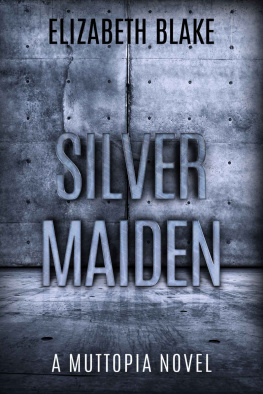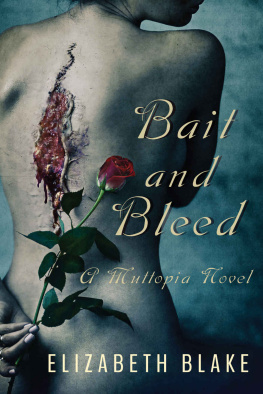Robin Blake - Anthony Van Dyck
Here you can read online Robin Blake - Anthony Van Dyck full text of the book (entire story) in english for free. Download pdf and epub, get meaning, cover and reviews about this ebook. year: 2009, publisher: Ivan R. Dee, genre: Non-fiction. Description of the work, (preface) as well as reviews are available. Best literature library LitArk.com created for fans of good reading and offers a wide selection of genres:
Romance novel
Science fiction
Adventure
Detective
Science
History
Home and family
Prose
Art
Politics
Computer
Non-fiction
Religion
Business
Children
Humor
Choose a favorite category and find really read worthwhile books. Enjoy immersion in the world of imagination, feel the emotions of the characters or learn something new for yourself, make an fascinating discovery.

- Book:Anthony Van Dyck
- Author:
- Publisher:Ivan R. Dee
- Genre:
- Year:2009
- Rating:3 / 5
- Favourites:Add to favourites
- Your mark:
- 60
- 1
- 2
- 3
- 4
- 5
Anthony Van Dyck: summary, description and annotation
We offer to read an annotation, description, summary or preface (depends on what the author of the book "Anthony Van Dyck" wrote himself). If you haven't found the necessary information about the book — write in the comments, we will try to find it.
Anthony Van Dyck — read online for free the complete book (whole text) full work
Below is the text of the book, divided by pages. System saving the place of the last page read, allows you to conveniently read the book "Anthony Van Dyck" online for free, without having to search again every time where you left off. Put a bookmark, and you can go to the page where you finished reading at any time.
Font size:
Interval:
Bookmark:
In the process of turning this from a quixotic idea into a book fit for publication, I have incurred an immense debt to the owners and curators who gave me access to works by Van Dyck. Some have gone out of their way to open up closed galleries, store rooms and curatorial files specially for my benefit. They include the Earl of Radnor, the Duke of Buccleugh, Susan Golassy (the Frick Collection, NY), Nancy Yeide (National Gallery of Art, Washington D.C.), Melanie Harwood (Museum of Art, Baltimore, Ma.), Helen Braham (the Courtauld Institute), Lucy Whitaker (Christ Church Picture Gallery/the Royal Collection), Lucy Till (Dulwich Picture Gallery), Daniel Christaens (Museum Maagdenhuis, Antwerp) and staff at the Isabella Stewart Gardner Museum, the J. Paul Getty Museum, the Boston Museum of Art, the Los Angeles County Museum of Art, the Yale Center for British Art and The Salisbury House Foundation, Des Moines.
Among those who have allowed me to tap into their profound knowledge of art history are Oliver Millar, Elisabeth Mention, Charles Hope, Martin Wyld and Helen Weston. I am also indebted to two historians of seventeenth-century England Caroline Hibbard and Victoria James as well as to Dom Anselm Cramer O.S.B., Fr T.M. McCoog S.J., Fr Thomas Clancy S.J., Fr Daniel Butaye S.J. and Fr Paul Begheyn S.J., who illuminated important areas of seventeenth-century Catholicism.
For all sorts of other help, either with research or simply in stimulating conversations about Van Dyck, I must mention the late William Waugh, Janet Waugh, Mark Roberts, Heather Roberts, Ferdie McDonald, Robert Noel of The College of Arms, Clare Ford-Wille and William Raymakers. Charles Gutteridge and Charlotte Lorimer generously gave me the use of their cottage when I needed somewhere to write. Romee Day was an inestimable translator from the Flemish, Lara Panzini was a trusty Italian teacher and Edwin Williamson supplied valuable insights into seventeenth-century Spanish usage.
On the publishing side, Gill Coleridge, and her assistants Harriet Gugenheim and Lucy Luck, provided agency service beyond the call of duty, while Richard Cohen had much to do with the book in its early stages. I am finally more than obliged to Carol OBrien and her staff at Constable for their charm, sympathy and hard work.
Lastly I hope that my family know what invaluable assistance they have been, in particular my father John Blake who so carefully preserved a bundle of letters about the Accrington Van Dyck.
These people share much of the credit for what is good about the book. Any dubious arguments and conclusions that it contains are all mine.
RB
The Accrington Van Dyck Revisited
The al fresco double portrait, Katherine, Lady Stanhope, and Lucy, Lady Hastings, was my grandfathers most prized possession but, when he died, there was still a great deal of knowledge he lacked or was unsure about. Was his painting by the hand of Van Dyck, his studio, or some later copyist? What was the connection between the two women and what part, if any, did they play in the painters life and that of the country? And what does the design mean in the context of the whole of the artists work? Having traced his journey from being a Mozart of painting to a pittore cavalieresco and finally a Stuart kings Painter-in-Ordinary, I am in a position to pass on information which my grandfather very much wanted to know. I would say firstly that, although the painting he owned is not the most beautiful portrait-design completed by Van Dyck and his studio in England, it is a surprisingly interesting one.
A close look at the picture itself shows what a carefully designed, very deliberate work it is. Here are two aristocratic ladies sitting at ease in a bosky, signally English landscape. The general shape of the picture casts back to The Rest on the Flight into Egypt and Baltimores Rinaldo and Armida. The upper left is blocked in with close tree-trunk and forest shadow, the lower left stopped by a large rock while, away to the right, the image opens up into distance, a patch of blue Titianesque sky and, below this, ashen clouds streaked with the embers of a setting sun. This landscape immediately connects the painting, in its temperate English way, with the great equestrian portraits of Van Dycks later Genoese period.
The subject on the right, in the red dress, is plausibly presumed to be Lucy Hastings, Countess of Huntingdon. She has settled herself broadly on an oak chair and is strumming a lute, though the main part of the instrument is hidden by her sleeves and body. We see only the topside of the peg box, angled towards us and artfully foreshortened, with Lucys left fist clamped around the fretboard. She looks over a plump left shoulder straight into our eyes, a glance which is disturbing in its directness. The nostrils of her beaky nose are curved, her lips fractionally parted. The lower one is swollen and prominent. Her red dress, spreading out to conceal all of the chair except the backrest, is trimmed with lace at the elbows, leaving her forearms exposed. Around her neck is a rope of fat pearls.
Her companion is undoubtedly Katherine, Lady Stanhope, who was eventually to be created Countess of Chesterfield in her own right and who, at about the time of the portrait, was loved by Van Dyck. From under eyelids so much lighter and less sultry than Lucys, she leans against the convenient boulder staring into the middle distance away to the pictures right. Her dress, in exemplary contrast to the other, is dove-grey and her long-fingered hands are inactive loose, unblemished, ultra-slender and apparently without musculature or bone. The only tensed muscles in her body are those of the lips, not the tension of a smile, but perhaps with that of incipient truculence. Two springs of hair dangle over her steeply sloping shoulder where she shows much bare skin shoulders, throat and the upper part of her breasts. A gold diamond-studded brooch is pinned between the breasts, with a grape-sized pendent pearl dangling over her stomach. Rich jewels also decorate her sleeves and slim waist-chain.
In spite of Van Dycks attachment to her, Katherine presents a cool, austere, unfriendly figure. Compared to her companion she is without sensuality and the contrast is not just one of superficial appearance but of pose and attitude. Lucy seems to invite us into the world of the portrait, admitting her own complicity with the painter, as also did Lucas Van Uffel rising from the chair in his single portrait and Cornelis de Wael leaning over the back of his chair in the portrait with his brother. But the enigmatic Katherine seems to deny the existence of either the painter or the observer. She is lost in her thoughts, almost trancelike: is she even aware of her surroundings? It is just possible she is preparing to sing (the National Gallery of Ireland version has been subtitled The Concert) and, if so, an air by Lawes perhaps This Mossy Bank would be a suitable and popular choice. But if she does sing, we can be in no doubt it will be for herself alone. The difference between these two women is marked and in spite of the wild rose springing from the undergrowth between them, six vivid blood-red blooms which, according to Zirca Zaremba Filipczak, ought to symbolise their friendship one cannot help wondering whether they were really such good friends after all.
As we have already seen, there are altogether three surviving versions of this double portrait. The Accrington Van Dyck had been owned, as Hubert himself found out, by the Sitwell family at Renishaw Hall and, after my father sold it in July 1991, is still in private ownership. The other versions are both on public show, the original at the Paul Mellon Center for British Art at New Haven, Connecticut. This is the one which Hubert Blake heard about from Lord Chesterfield in 1930, and which hung half way up the grand staircase in the Chesterfield home of Beningbrough Hall in Yorkshire. It is almost certainly the prime version. The third version of the painting remains where it was seventy years ago, unknown to Hubert, in the National Gallery of Ireland, to which it had been bequeathed in the 1920s by the painter Lucius OCallaghan. Classified by the Gallery as a studio work, its previous history is unknown.
Font size:
Interval:
Bookmark:
Similar books «Anthony Van Dyck»
Look at similar books to Anthony Van Dyck. We have selected literature similar in name and meaning in the hope of providing readers with more options to find new, interesting, not yet read works.
Discussion, reviews of the book Anthony Van Dyck and just readers' own opinions. Leave your comments, write what you think about the work, its meaning or the main characters. Specify what exactly you liked and what you didn't like, and why you think so.












